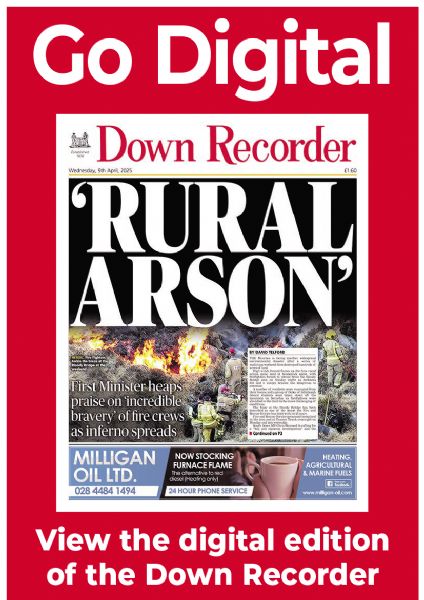Environment plan to protect habitat
Environment plan to protect habitat
4 July 2018
NEWRY, Mourne and Down Council has been chosen to spearhead a new EU-funded environmental project designed to help restore natural habitats and protect endangered species across a range of sites, including part of the Lecale coastline.
The Collaborative Action for the Natura Network (CANN) project is funded by the EU’s Interreg VA programme to the tune of almost 28.5m which is being managed by the Special EU Programmes Body.
The new initiative — details of which were unveiled last week — will restore sites throughout Northern Ireland, the Republic of Ireland and Scotland.
Council chairman Mark Murnin said the organisation is proud to lead the important new project designed to help raise awareness among cross-border communities about the potential threats to natural habitats and endangered species in their area.
“Cross-border collaboration is the most effective way for us to protect, improve, restore and sustain the threatened habitats and species in our shared regions,” he added.
Special EU Programmes Body chief executive Gina McIntyre said the EU was committed to the protection of the shared natural environment across Europe as demonstrated through its Birds and Habitats Directives.
“Under the current INTERREG VA Programme, approximately 284m has been allocated to support a wide range of cross-border environmental protection projects,” she explained.
“The CANN project will serve to further this European environmental policy by improving the conservation status of 3,150 hectares of natural habitats found across Northern Ireland, the Border Region of Ireland and eastern Scotland.”
The CANN project team comprises leading scientists, researchers, local authorities, charities and community organisations and will implement strategies to improve the condition of valuable habitats and help protect the wildlife that lives there.
In addition, the team will work with local people and communities to manage the unique peatland and wetland landscapes along with their iconic species.
Overall, the project will focus on seven protected habitats, as well as seven priority species including birds such as the hen harrier, golden plover and red grouse, insects such as the marsh fritillary butterfly and freshwater species such as white-clawed crayfish.
Match-funding for the CANN project has been provided by the Department of Agriculture, Environment and Rural Affairs, the Department of Housing, Planning and Local Government in Ireland and Scottish Natural Heritage.


